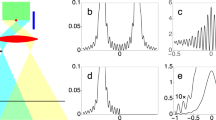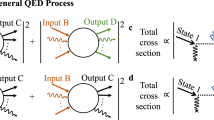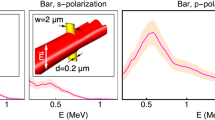Abstract
IF an electron is sent across a beam of electrons the chance is very small that it will pass a single electron of the beam so closely as to cause any deflexion of consequence from its original path. In a beam that has a current-density of 100 mA./cm.2 and a velocity of 100 electron-volts, the electron density is such that it contains 109 electrons per cm.3. So the mean distance between two neighbouring electrons may be said to be about 10â3 cm. To obtain a deflexion of 1°, however, a crossing electron would have to pass an electron of the beam at a distance of about 10â7 cm.
This is a preview of subscription content, access via your institution
Access options
Subscribe to this journal
Receive 51 print issues and online access
$199.00 per year
only $3.90 per issue
Buy this article
- Purchase on Springer Link
- Instant access to full article PDF
Prices may be subject to local taxes which are calculated during checkout
Similar content being viewed by others
Author information
Authors and Affiliations
Rights and permissions
About this article
Cite this article
JONKER, J., VAN OVERBEEK, A. Control of a Beam of Electrons by an Intersecting Electron Beam. Nature 164, 276–277 (1949). https://doi.org/10.1038/164276a0
Issue Date:
DOI: https://doi.org/10.1038/164276a0
Comments
By submitting a comment you agree to abide by our Terms and Community Guidelines. If you find something abusive or that does not comply with our terms or guidelines please flag it as inappropriate.



